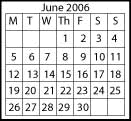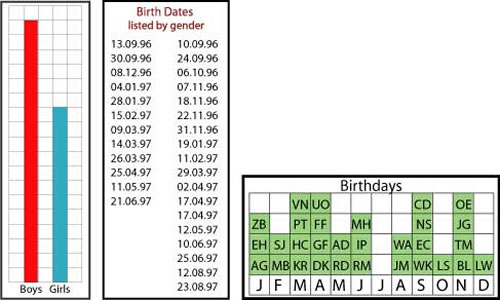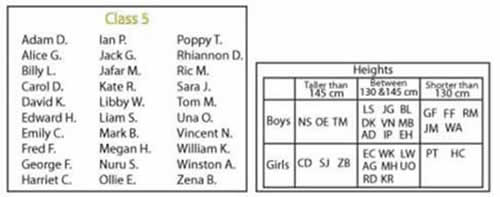Skip over navigation
There are thirty children in Class 5. All the first part of the summer term they had been doing a project collecting data about themselves and making all sorts of lists, charts and graphs to present it.
Now it is June and they are going to present all they have done in the project to the whole school. There is double excitement in the classroom that day because it is also one of the children's birthdays.

Here is some of the work they have done:

On what day did Class 5 present their work?


What information can you find out about the child whose birthday it was on project day?



Or search by topic
Number and algebra
Geometry and measure
Probability and statistics
Working mathematically
Advanced mathematics
For younger learners
Presenting the Project
Age 7 to 11
Challenge Level 





There are thirty children in Class 5. All the first part of the summer term they had been doing a project collecting data about themselves and making all sorts of lists, charts and graphs to present it.
Now it is June and they are going to present all they have done in the project to the whole school. There is double excitement in the classroom that day because it is also one of the children's birthdays.

Here is some of the work they have done:

On what day did Class 5 present their work?
Here are some more charts and posters made by Class 5 for their project. The pie chart shows the children's hair colour.


What information can you find out about the child whose birthday it was on project day?
There are twins in this class. What information can you find out about them?
You may also like
The Pet Graph
Tim's class collected data about all their pets. Can you put the animal names under each column in the block graph using the information?
How Big Are Classes 5, 6 and 7?
Use the two sets of data to find out how many children there are in Classes 5, 6 and 7.
Real Statistics
Have a look at this table of how children travel to school. How does it compare with children in your class?

